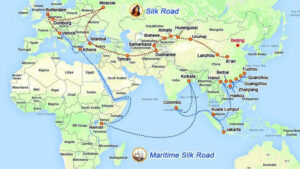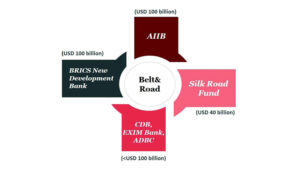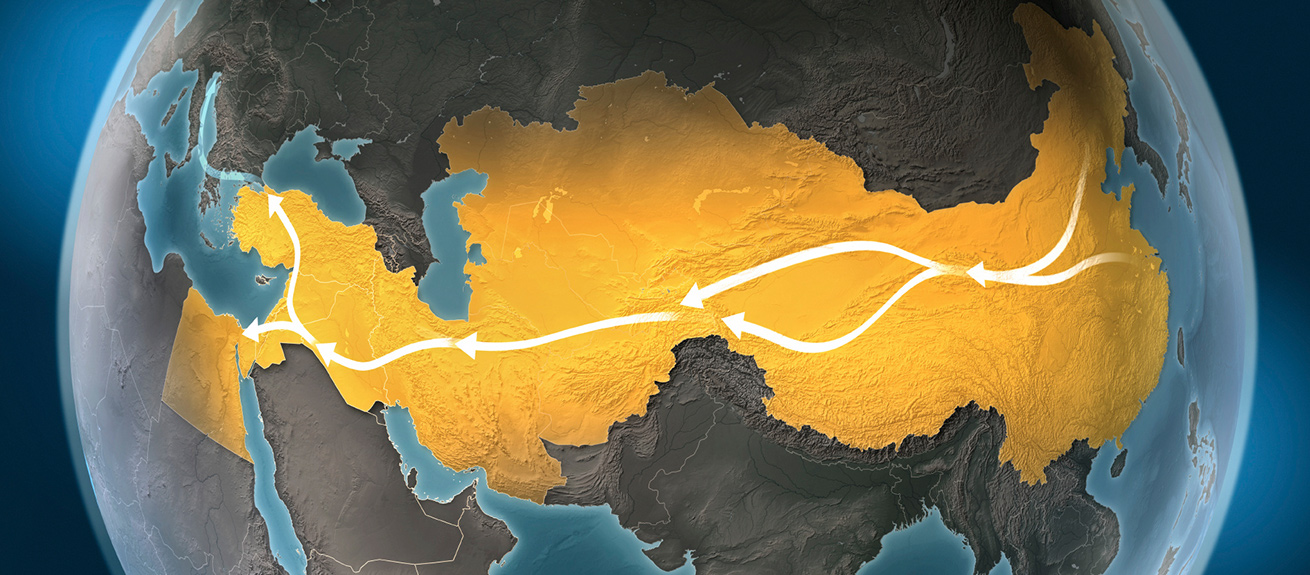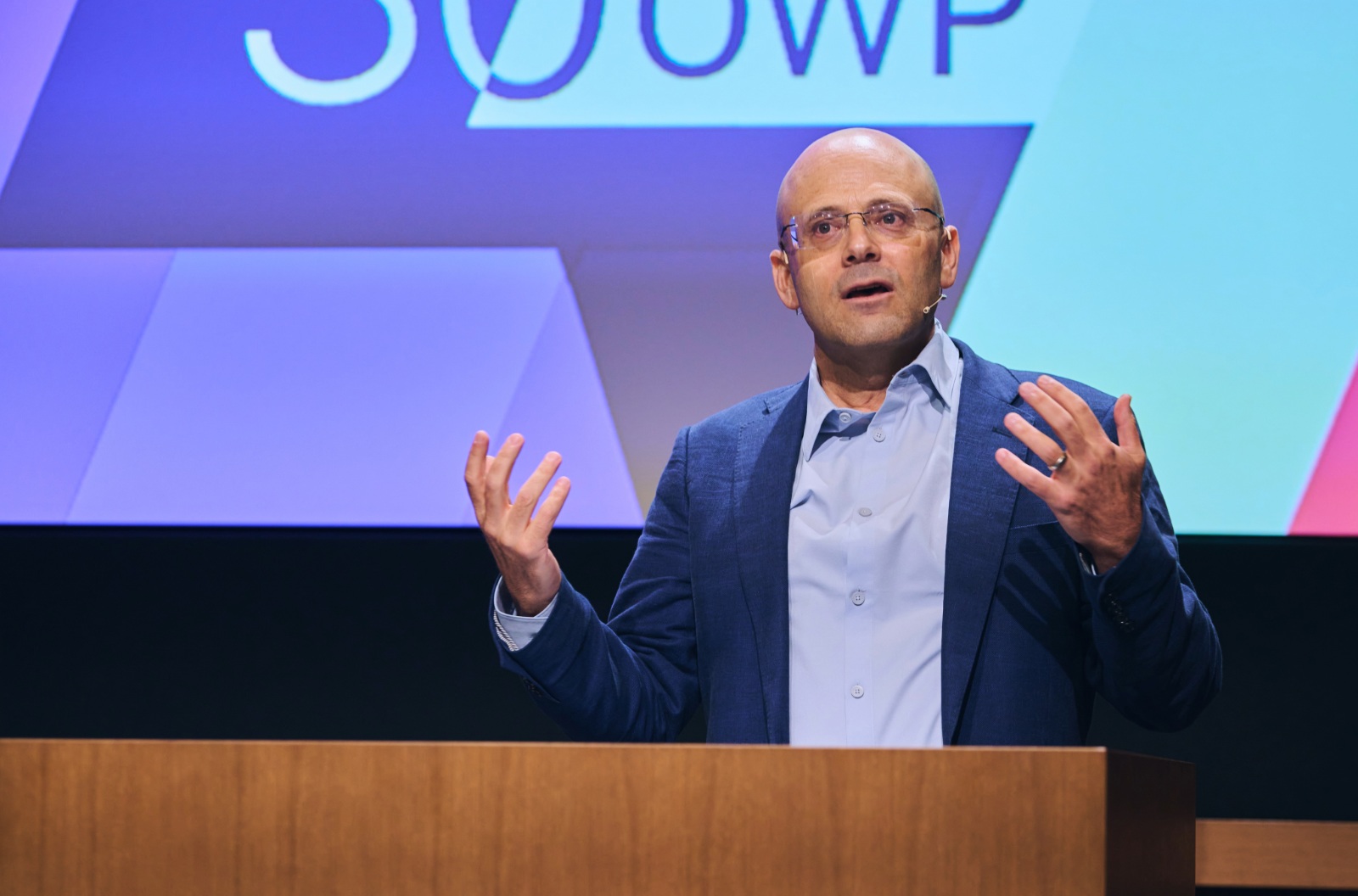Senior strategy executives attended an IMD Discovery Event to learn more about China’s “One Belt – One Road” initiative, potentially the most dramatic transformation of the world economy since the industrial revolution.
In 2013, China announced One Belt One Road (OBOR) – an initiative that could potentially reshape the world order. OBOR comprises a land-based “Silk Road Economic Belt” and an oceangoing “Maritime Silk Road.” The “Belt” is an infrastructure network of transport, energy and communication projects stretching from Xi’an in China through Central Asia to Moscow, Rotterdam and Venice. The “Road” is its maritime equivalent, a network of planned ports and other coastal infrastructure from South and Southeast Asia to East Africa and the northern Mediterranean Sea.
Over the last three years, the OBOR initiative has gathered significant momentum but its underlying concept, scope and framework remain fluid. Understanding these as well as the associated business challenges and opportunities were the objectives of the discovery event led by Professor Jean-Pierre Lehmann in February 2016. Jean-Pierre opened the discussion by setting the current and historical context in China. He stated that for most of recorded history China has been the world’s largest economy. However, it collapsed during the 19th century and found itself a passive victim of globalization. Since 1979, the late Deng Xiaoping launched arguably the world’s most radical economic reform program ever, which saw the reemergence of China as a global power. Jean-Pierre stated, “The Middle Kingdom is now back; China has gone through an economic revolutionary path condensed in time.” Going forward, the OBOR initiative could well unleash – through infrastructure, trade and investment – the most dramatic transformation of the world economy since the industrial revolution. China is the world’s first or second largest economy, the third largest global investor, and the largest and third largest trader of goods and services, respectively. However, its economic growth in 2015 stood at 6.9%, the slowest it has been in a quarter of a century. Lu Xiankun indicated that for many years a GDP growth rate of 8% was almost like a “holy number” for the Chinese government. Anything below that was alarming. It meant serious problems in many aspects, particularly employment. But now, people are already talking about a growth of below 7%. Meanwhile, China is confronted by myriad internal challenges – a regional development gap between coastal and central/western regions, many people still living below the poverty line, massive migration from countryside to cities, serious industrial overcapacity and employment challenges for young graduates. The OBOR initiative could be the answer to some of these issues.
The Rationale
According to Lu, OBOR is the most important thrust of China’s opening-up and developmental strategy (both internally and externally) since its accession to the WTO in 2001. China has been looking to the WTO for trade liberalization reforms but, with the seeming failure of the Doha round, the WTO remains embroiled in a deadlock. The reason for the deadlock, Marion Jansen explained, is that the US and EU want to execute deals that are more complicated, including issues such as standards and regulations on labor, competition, investment, and environment, i.e. those that are not priorities for the developing countries. For this reason, the major industrial powers – EU, Canada, US, Japan – have opted for “mega regional” deals to cover issues that they want to resolve. Faced with slowing growth, China cannot wait for the WTO to take action. Since infrastructure is not typically part of the trade agreements negotiated by the WTO, China has moved on with the OBOR initiative, which focuses on infrastructure as a key pillar.

Figure 1: 21st Century Silk Roads
Perceptions about OBOR
The international community is still struggling to understand the gist and impact of OBOR since China has difficulty in explaining its intentions. Initially, OBOR was referred to as “China’s Marshall Plan” by some Western media and more recently it has been seen as a countermeasure to the US-led Trans Pacific Partnership (TPP) and pivot to Asia. Lu explained that China is presenting OBOR as an open instrument developed in a multipolar world that seeks market-driven collaboration with 65 countries, and is even open to countries that are not situated along the OBOR. A case in point is Switzerland. Lu stated, “China wants to avoid the impression that it is sinking its dragon claws into other countries. Instead, it is trying to find synergies with existing programs in these countries.” Projects will come incrementally and will be adapted differently to the local aspirations of diverse countries. Unlike the TPP or other WTO agreements that are often based on hard and strict rules, OBOR is informal, cooperative and loosely structured with a soft approach to rules and boundaries. Shuaihua Cheng drew an analogy, “the OBOR policy is similar to Tai Chi rather than American kickboxing. Or like Uber, which works on a model of open sourcing and business via collaboration.”
Marion concurred that OBOR’s approach is indeed inclusive as she compared the countries covered by both TPP and OBOR. TPP countries – which do not include Indonesia, India and China – are all relatively similar with high GDP per capita (with the exception of Vietnam), whereas OBOR countries are way more diverse. She stated, “If OBOR only achieves half of what it intends to do, it could be very powerful.”
Shuaihua made the point that the TPP does have a negative trade impact on China by preventing access to preferential markets and tariff reductions. Of course, trade and manufacturing will be diverted to TPP members, for example to lowcost Vietnam. Furthermore, US President Barack Obama has openly stated, “The US, not China, should write the rules of the global economy” to which China’s ministry of foreign affairs responded that no single country should write the rules of global trade. Shuaihua feels therefore that OBOR is clearly a measure to circumvent the US. Jean Pierre, for his part, sees it as an alternative to TPP.
Opportunities
The first opportunity OBOR presents for China is that it will open new markets, which will help to resolve issues of domestic overcapacity. Moreover, the infrastructure thrust will reduce trade costs through central Asia and shift competitiveness inland. As the land corridors are set to run along the major Eurasian countries, through China-MongoliaRussia, China-Central and West Asia, China-Indochina Peninsula, China-Pakistan, Bangladesh-China-India-Myanmar, it will also enable the integration of inland and coastal China, bringing growth and stability to the region. An example upheld as a symbol of success for OBOR, the Trans-Eurasia Chongqing-Xinjiang-Europe international railway route, which starts in Chongqing and ends 11,179 km later (following 16 days of travel) in Duisburg, Germany, is currently being used by companies like BMW and HP.
China needs more such infrastructure projects to sustain its economic growth and to support important domestic industries. In fact, Marc Laperrouza senses a kind of desperation among Chinese businesses and government agencies to find new projects/acquisitions on technology and infrastructure. He feels that the country is currently obsessed with innovation. In fact, in southern China large-scale low-cost manufacturing is transforming into design houses in an effort to move up the value chain. China wants to move beyond its traditional role of exchanging infrastructure against natural resources, as in the case of its investments in Africa. By progressing with OBOR, it will take projects coupled with financing mechanisms to countries lacking in infrastructure, such as Indonesia or the Philippines. This will, in turn, allow China to offer its products and services to these countries in the longer term. Beyond hard infrastructure, Marc sees the potential for China to export standards for the very first time. China has been intensifying its efforts to set indigenous standards for homegrown ultrahigh voltage (UHV) transmission technology and aims to contribute to UHV standards internationally. Two factors are creating a window of opportunity for Chinese UHV technologies to gain acceptance as the de facto global standard: (1) It is the only country currently deploying UHV technology on a large scale and (2) No international UHV standard has yet prevailed.
While OBOR signals a new phase in China’s globalization process, what about soft infrastructure? Despite all its success, China lacks attractiveness and battles inferior quality perceptions. According to Marc, out of 7 million annual university graduates, there are 700,000 engineers but only a fraction of them are world-class. This situation could give rise to fundamental questions about quality and security for key strategic assets, for example as the UK’s next generation of nuclear power plants will be built in collaboration with China Guangdong Nuclear Power Group. Marc wonders if China’s infrastructure-driven hard power can translate into winning soft power. “Exporting the local advantage sounds good on paper but what about the ground reality of the specific OBOR countries? It was an African honeymoon for China until a few years ago but now the situation is growing tense.”
Ultimately, China wants better return on investment. While it is the biggest holder of US debt, it is also looking to invest elsewhere to not only enhance its returns but also to win friends in the process. Evidently, with OBOR the investment preference (e.g. M&A, EPC projects) will shift toward developing countries where priorities are power, transport infrastructure, telecommunication and water. The next open question is whether there is an actual business case for OBOR investments and whether it can bring sufficient returns.
Funding
Felix Sutter and Yeroen van der Leer pointed out that OBOR is expected to stimulate a massive trillion dollar market, much larger than China’s domestic one. The total investment needed in the relevant areas is about $5 trillion over the next five years while infrastructure demand in Southeast Asia stands at $2.5 trillion over the next 10 years. Infrastructure projects of such magnitude will create the need for equally strong funding.
For this reason, China has taken the lead in establishing the Asia Infrastructure Investment Bank (AIIB) with 57 founding members and a capital of $100 billion. Despite opposition from Washington, US allies including Australia, Britain, Germany, Italy, the Philippines and South Korea have all joined the AIIB, which is clearly seen as a huge political success for China. It is evident that Beijing-based AIIB allows China more independence from the American finance system. Capital will be also be made available through the Silk Road Fund ($40 billion), BRICS Development Bank ($100 billion) and a recapitalization of other Chinese banks (see Figure 2). However, China’s state funding will only provide 15%, just a fraction, of the developing market infrastructure demand.

Figure 2: OBOR – One Capital Market
Within this context, Felix raised the question that is top of mind for European companies, “How can we play a role in the OBOR projects. How can we bid to form part of a consortium, for example, in Indonesia? How willing are we to go in there and risk losing IP?” China has to define projects with tangible outcomes and governance elements. Only then will it attract international private equity or sovereign funds that see OBOR as the right place for their investments. He highlighted the opportunities for European companies arising from OBOR:
- Outbound capital projects in partnership with Chinese players, through the supply of equipment, technology or intellectual property.
- “Europe eastward” strategy, allowing access to developing market governments and new clients through OBOR projects.
- Leverage Chinese partnerships in OBOR countries to access the Chinese market.
- Outbound financing/private equity fund.
To leverage the above-mentioned opportunities, the Silk Road Chamber of International Commerce, headed by JeanGuy Carrier, was launched in Hong Kong in December 2015. With the participation of nearly 100 international, regional and national chambers of commerce, its objective is to put international business at the heart of the OBOR initiatives by connecting businesses, governments and investors. Jean-Guy explained that the ramifications of OBOR will encourage progress even in difficult areas such as Iran; a country that is seen as a problem suddenly starts to become a part of the solution. A strong business community in Iran that has long been in isolation is keen to reconnect. According to Jean-Guy, the OBOR strategy is being invented on the go. As he put it, “It is a 21st century big idea – probably the biggest idea floated in the last 10 years – and it is being implemented in a Chinese manner. You cross the river by feeling the stones. It may not sound very satisfying strategically but that is what is being applied.” However, he stressed that China was not starting from ground zero; it has for example already committed massive infrastructure investments in Sri Lankan ports and Kenya, and elsewhere.
Key Risks
When all is said and done, significant risks – political, economic and operational – have to be considered. Given that OBOR remains intentionally amorphous and at an early stage of implementation, the biggest stumbling block is lack of information and clarity. Furthermore, infrastructure projects require large-scale investment, high standards of management and involve long operating cycles, all of which mean great uncertainty in project profitability. Operational risks are also exacerbated by diverse legal and regulatory systems in OBOR countries. The current world economy is still unstable, and changes in macro-economic industry and market environment will have an impact on crossborder investment. Jean-Pierre closed the discussion by reiterating the greatest risk – geopolitics. The OBOR canvas is spread over the world’s most vibrant region which is also the most combustible. Asia’s balance of power remains fragile given China’s disputes with many of its neighbors, especially in the South China Sea. China’s challenge is to achieve a peaceful rise, for which historically there is no precedent.
Discovery Events are exclusively available to members of IMD’s Corporate Learning Network. To find out more, go to www.imd.org/cln






